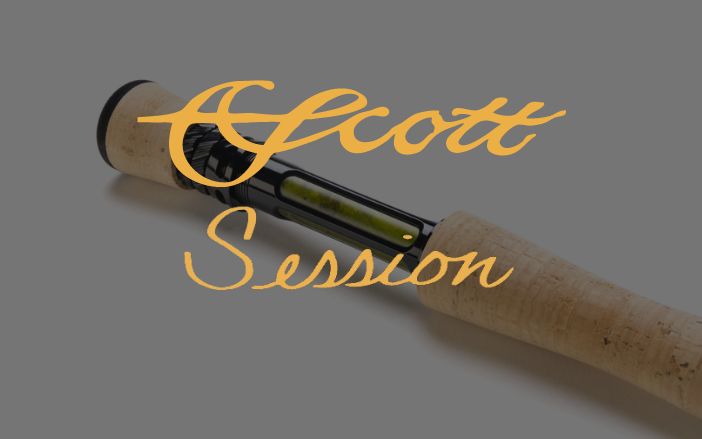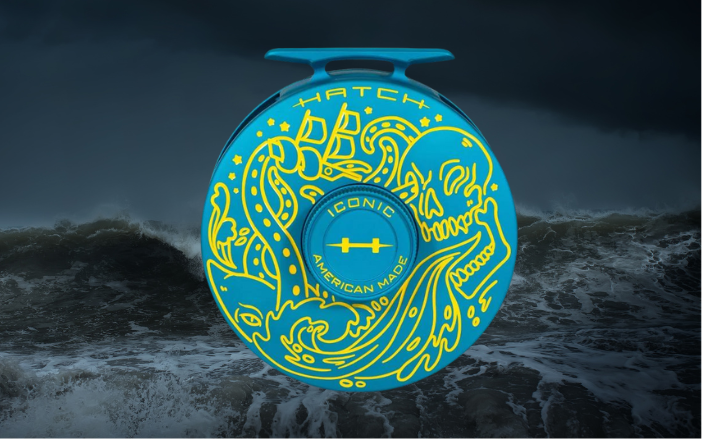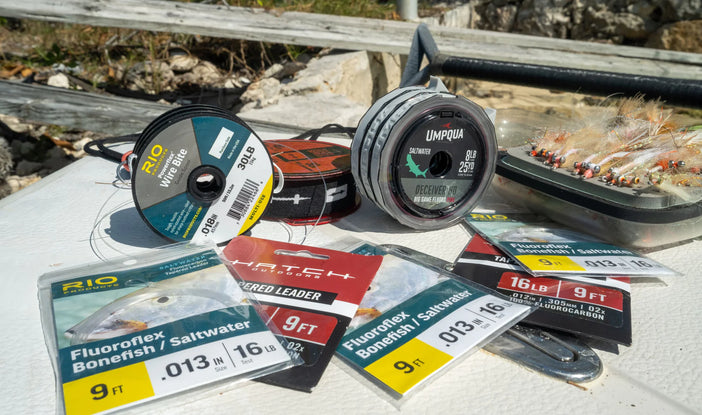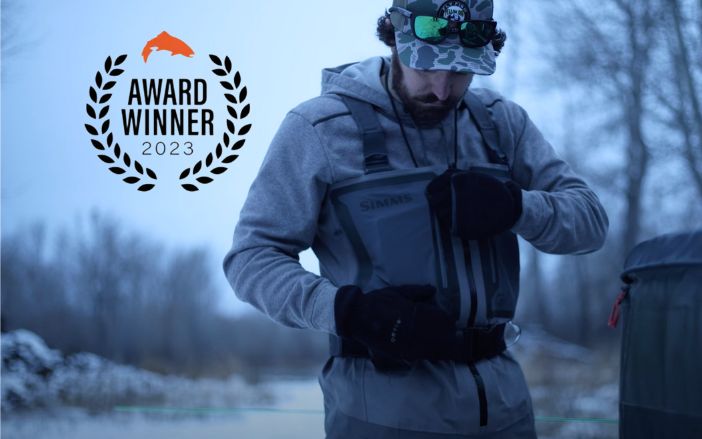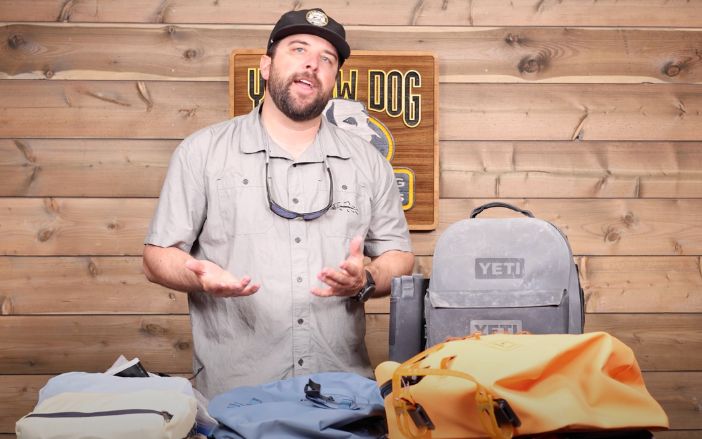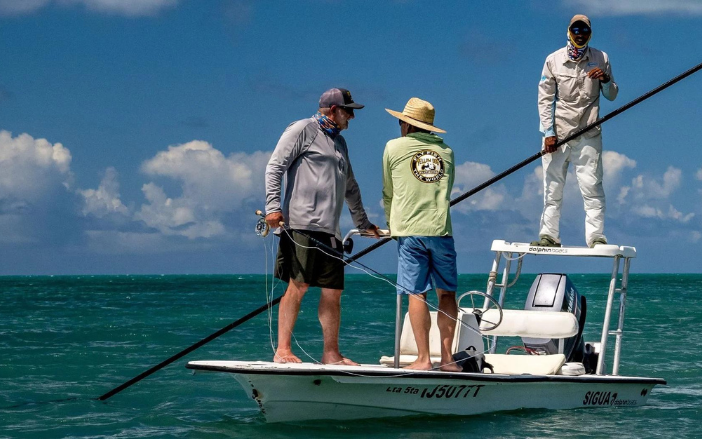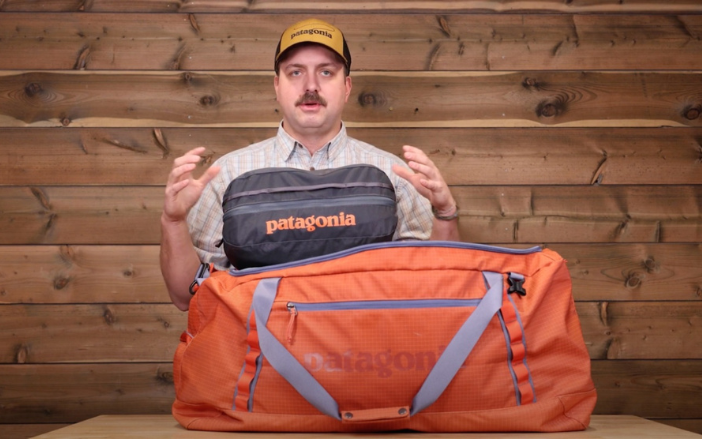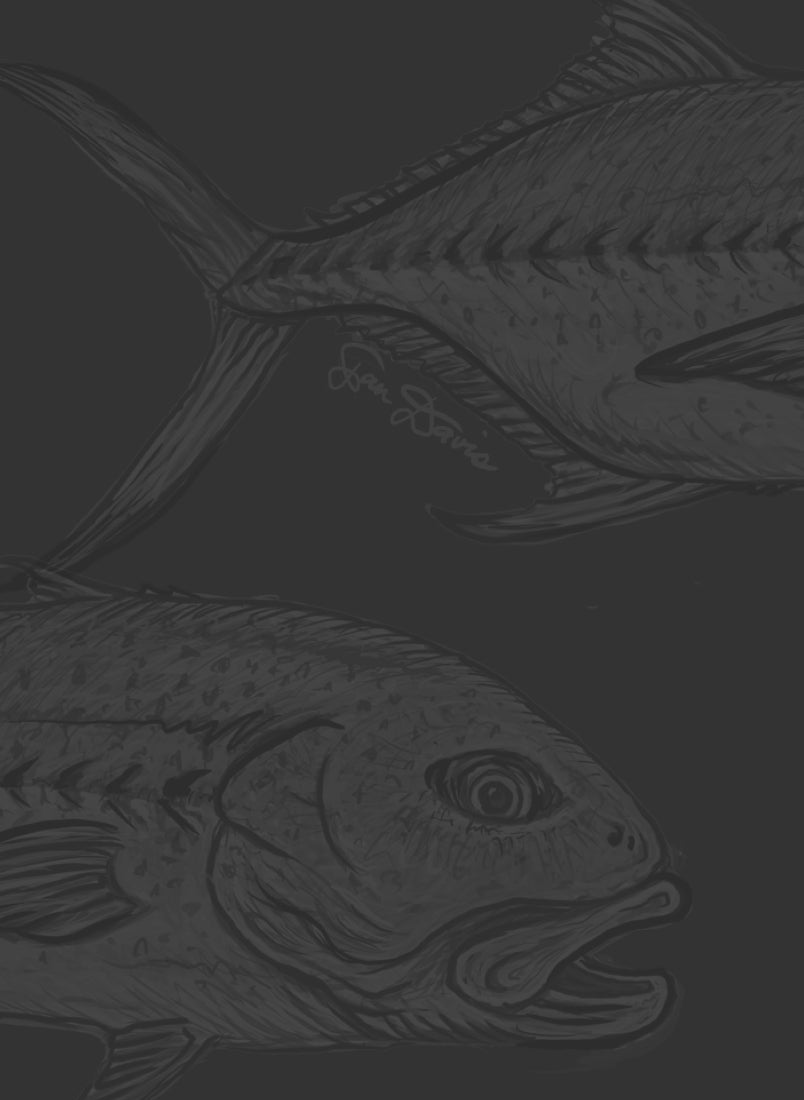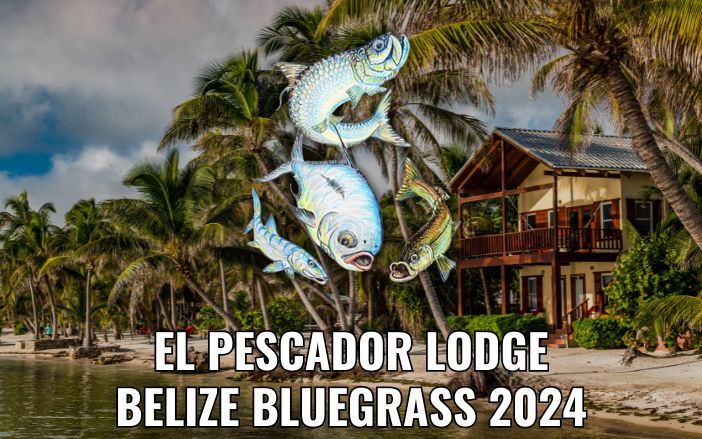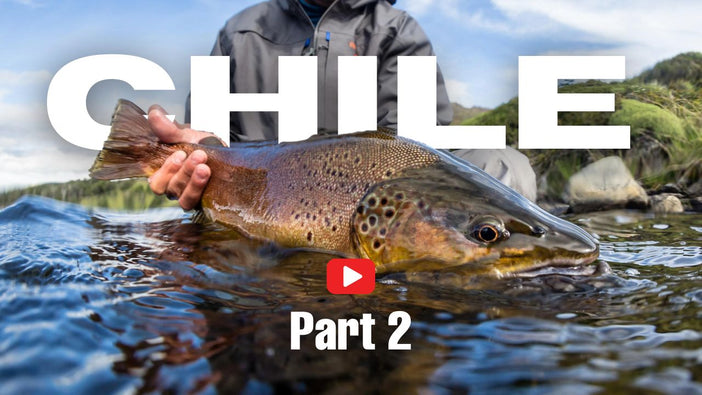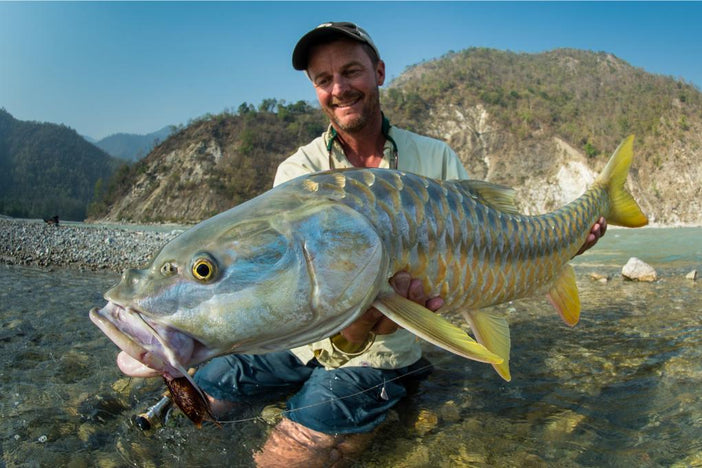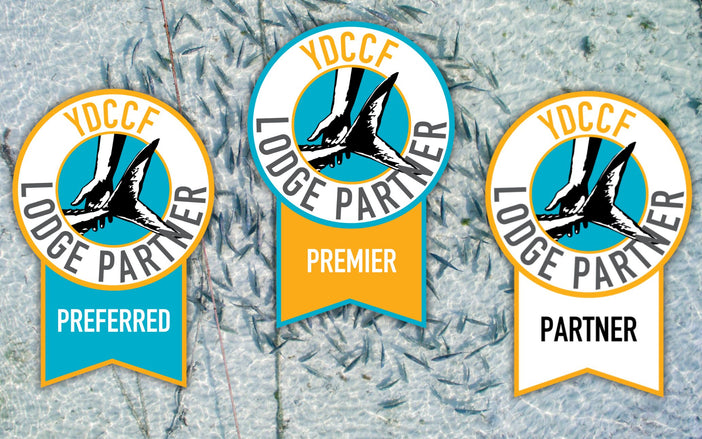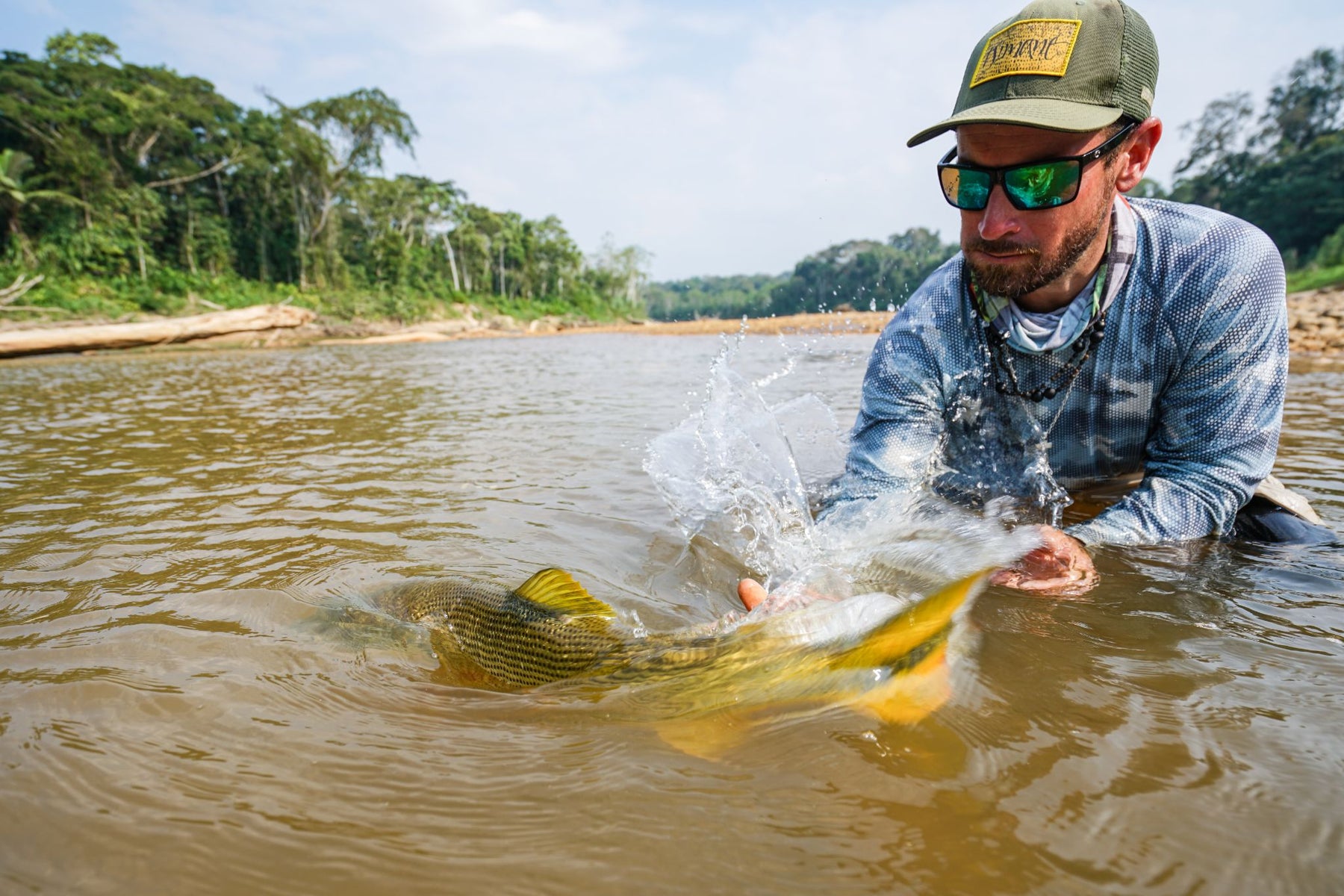Article by Yellow Dog's Jack Porter - Director of South America Programs
1. Felt sole wading boots make a difference.
One of the questions I get a lot is whether people really need to buy a pair of felt wading boots. The answer is yes. The river structures vary in every water section, from gravel beaches to sharp volcanic rocks, and slippery freestone boulders. These rocks are covered in a thin slime and you’ll be walking on them all day – felt-soled boots make a difference.
 .
.
Being sure-footed as you’re tip-toeing up to a crystal-clear run with a trophy dorado suspended in the water column is imperative to ensure you have the best chance possible at hooking and landing the fish. A misstep, slip, or unnecessary noise can be the difference between having a shot at a fish and spooking one.
2. Line management – Don’t drop the line; keep the rod tip down, and keep stripping.
Golden Dorado is an aggressive, predatory, ambush species that know they’re at the top of the food chain. When the dorado eat, they typically take the fly with speed and power that most anglers are not familiar with, and many times, they move so quickly that they can catch anglers by surprise. The majority of the strikes happen within the first two strips of the cast landing, and once the dorado eat the fly, it’s important to be ready for anything.
In the crystal-clear rivers of the Bolivian jungle, the dorado is hypersensitive to its surrounding environment. When sight fishing, the casts will be made upstream from behind the fish so they don’t see you. These situations are intense, and you only get one cast per target.
 .
.
Because you are casting upstream, it is absolutely imperative that when the fly touches the water, you have the line in your hand, and there is tension in the line. With the rod tip down and the fly in the water, you should start stripping, and you should be ready for the eat. Typically, the fish will explode on the fly within the first two strips, and because you are below the fish and stripping the fly downstream, the fish will take the fly moving towards you. This makes it difficult to strip set.
The eats are extremely visual, and most anglers’ instinct is to perform a large strip set when the fish takes the fly. Unless you get lucky, it is almost impossible to hook the fish like this. Instead, the most effective way to stick the dorado is to keep stripping as fast as you can to put tension in the line as quickly as possible. Many times, the fish will continue moving towards you so keep stripping that line! Once you feel the weight of the fish, and you can’t strip anymore, you’ve set the hook, and the fish will take to the air – at this point, you have a solid connection.
3. Bolivia is Hot… Usually
During the dry season, the jungles of Bolivia are hot and humid. It’s common to see temperatures in the 90’s with high sun and humidity. Wearing long sleeves, sun gloves, a hat, and a buff is important for protecting yourself during long days in the sun. You will spend the majority of your fishing days on your feet walking and wading. Hiking up and down the rivers while casting big flies on 8’s and 9wt’s all day will have you sweating, so constant water consumption is a must.
Having electrolyte tablets and packets will make a huge difference in keeping you hydrated. During the heat of the day, when you need a break, don’t be afraid to tell your guide that you’d like to sit down for a few minutes in the shade. Another way to cool off is to lay in the water for a minute or two – even though the water is warm, it will drop your core temperature, and it can feel like you pushed the “reset” button.

While the jungles are usually hot, it’s not always the case. On my last trip to Bolivia, we had high temperatures in the 90’s for the majority of the week, but for the last two days, we didn’t see the temperature rise over 65 degrees. While this doesn’t sound terribly cold, with the high humidity, it sure feels cold, and I was glad I brought a jacket.
4. Tights are better than pants
There’s a reason all the guides wear tights every day as opposed to lightweight pants – they are better. While performance fishing pants are lightweight and comfortable, when wet, they do hold water, and they create drag and resistance when walking through the water. Tights are lightweight, hold almost no water, and will have you wading through the water with comfort, stealth, and efficiency.

5. This trip is physically demanding
While we always make sure to point this out, I would say that 80% of travelers return from the trip and tell me that it was more physically challenging than expected. More than 90% of the fishing is done while wading – this means you are constantly climbing in and out of the dug-out canoes, walking long gravel bars, scrambling over boulders, and fording the river.
 .
.
All of this in 90 degrees with a relative humidity of 80%. Anglers that want to go to Bolivia should prepare their bodies for non-stop rigorous wading, and I would highly encourage travelers to bring their wading staff. The more physically fit you are, the more water you will be able to see, and the farther you will be able to walk to access sections that other anglers might not be able to see.
6. You need to see the fish
In the clear-water tributaries, having the ability to see the fish is crucial for success. While the golden dorado can hold in “trout spots,” spotting these fish is a different story. They have dark backs with a green tint that blend into the streambed, and they hold in their spots without moving. It takes a few days to understand where to look and what to look for, but the guides and natives seem to have a 6th sense for locating these river monsters.
Many times, you will approach a pool walking up the bank one small, slow step at a time as you and your guides ruthlessly scan the water, looking for targets. Once your guide sees a holding fish, it is very important that YOU see the fish so you can make the correct cast. In the shallow and clear water, the fly has to be right in front of their nose so if you don’t know where the fish is, and your cast is 3 feet off, the opportunity is lost.

I recommend having two good pairs of polarized sunglasses that block light from entering from the sides. I always like to travel with two pairs of sunglasses: One for bright and sunny conditions, and a second pair for low light conditions that you may encounter in rainy weather or during early mornings or late evenings. The bottom line is that if you can’t see the fish, you can’t make the right cast, and a good pair of polarized glasses make a difference.
7. Check your equipment and practice before you go
Fishing for golden dorado in Bolivia is a unique fishing experience that requires preparation and adjustments from your “normal” fishing techniques and tendencies, regardless of where you live and what you usually target with your fly rod. You will be wade fishing with 8 wt & 9 wt rods, casting large & heavy flies, for aggressive & toothy fish. While a lot of anglers are comfortable casting 8 & 9 wt rods, the size and weight of the dorado flies require the appropriate fly line with a fast-action rod, and you may have to adjust your casting stroke to accurately deliver a good presentation.
Nowadays there is a huge variety of fly rods and fly lines available – so much so that it can be overwhelming and confusing. It’s very easy to find bad information or to put to incorrectly pair a fly line with a fly rod. Not all 8 wt rods are created equal, and not all 8 wt fly lines have the same grain weight and taper design. Understanding the relationship between your fly rod and your fly line is extremely important when gearing up for this trip.
 .
.
You’re going to want a fast action rod, with an overweighted line that has an aggressive taper to help you turn over these big flies at distance. I recommend a less aggressively tapered line for advanced anglers and proficient casters. Regardless of your skill level, would I highly recommend going into your local fly shop to test various rod/line combinations until you find one that fits your casting style. When practicing, it’s important to tie on one of the heavy dorado flies, as this will help you determine what is going to work the best for you.
Comfort while casting will only come with time and repetition. Head out to your local park or pond and work on hitting targets at different distances. Practice and preparation will change your experience in the jungle, and it will result in more landed fish.
8. Dorado isn’t the only fish in the river
While the Dorado is the undeniable star of the show, there are other exciting and unique species to target in the jungles of Bolivia – Pacu, and Yatorana.
Pacu: The jungles of Bolivia offer Pacu whose average size ranges from 12 to 17 pounds, and fish up to 25 pounds are caught every year. Pacu prefers dark, deep, and slow-water pools, where they are often found in schools. However, Pacu can also be found in submerged river structures, in the backside of pools, or cruising along sandy beaches collecting food in a way similar to big bonefish. It is an omnivore with an extremely varied diet of fruits, flowers, leaves, seeds, fish, terrestrial and aquatic insects, small vertebrates, frogs, rodents, and even chicks. Pacu love hot weather and warm water.
Because they are omnivorous, the best conditions for Pacu fishing are on hot windy days when the wind blows leaves, fruits, and debris into the river. In these conditions, you will see Pacu cruising and eating off the surface, creating fantastic opportunities for sight fishing. The best cast is typically hitting them with the fly right on the head. When hooked, Pacu are known for their immense strength and long runs. They do not jump like the dorado, but they fight much harder!

Yatorana: Pound for pound, the Yatorana is the strongest fish found in the Tsimane area. As a species, it is extremely beautiful and recognizable by a black band in its caudal and anal fins. Tsimane offers great fishing for Yatorana, with an average weight of 4 pounds and trophies of up to 15 pounds in the river systems. It is an omnivorous fish, an opportunist associated with riverside vegetation, where it finds food and shelter. Its varied diet includes fruits, seeds, small fish, and land insects.
The best sites for catching Yatorana at Tsimane Lodge are the upper Sécure, its small tributaries, Agua Negra, and the upper Pluma/Itirizama Rivers. It is a sensational catch on light gear using surface flies and small streamers. Yatorana is extremely quick, and its small mouth can make them difficult to hook. Once connected, it fights like a Dorado with double its weight, offering tremendous resistance, quick runs, and sporadic jumps. It avoids sites with a high concentration of Dorados (its main predator) but is associated with the Pacu, as they share similar habits and diets.
Read More Articles:
- 5 Reasons to Consider a Jungle Fishing Trip
- Ultimate Guide to Fly Fishing for Golden Dorado
- Welcome to the Jungle: We've Got Fins and Fangs
- Golden Dorado Fly Fishing Equipment List
- Bolivia Fly Fishing Gear Guide: Everything You Need
WAYPOINTS Podcast:
Marcelo Perez: Bolivian Golden Dorado and a Life of Adventure






